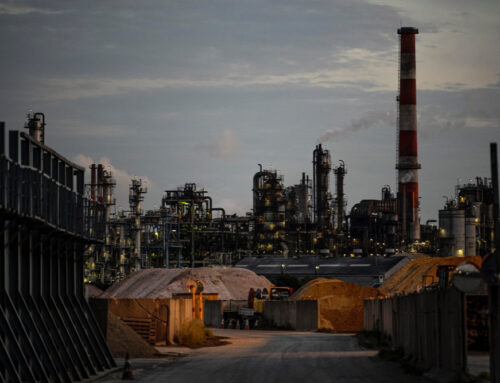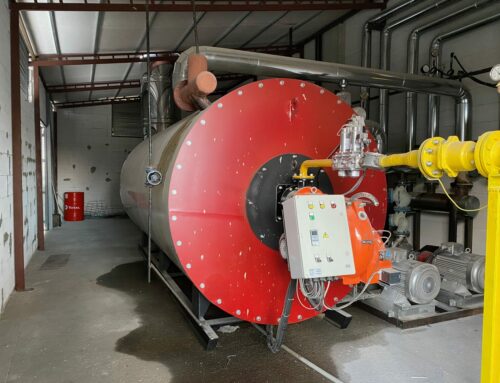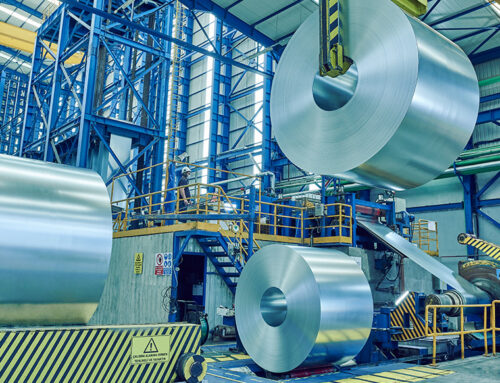The situation where two fluids transfer heat to each other without any physical contact is called a heat exchanger. Although the industrial heat exchanger type has different criteria, it works with the same principle. In each type, hot and cold fluids are transferred to each other.
Industrial Heat exchangers are offered in 3 different types. These types, which are preferred according to the area to be used, have different features in their field. However, in general, all heat exchangers first collect the heat on the transfer surface and then transfer it to the other surface it comes into contact with. In this way, heat transfer is provided by the heat exchanger.
What is a Heat Exchanger?
The heat exchanger transfers two fluids in the form of gas or liquid to each other. In this transfer process, the mixing of substances is also prevented. There are plates inside the heat exchangers. These plates are of great importance. In the plates, both the fluids to be transferred are separated from each other and the heat flows to the other surface. This heat transfer process can take place simultaneously as cooling and heating.

Heat exchanger shell and tube repair in factories of petrochemical industries
Although the name of heat exchangers, which are very much needed in the industrial field, is not heard much, they are used almost every day. These products form the basis of the heating and cooling industry. Heat exchangers are included in the parts of vehicles needed in daily life.
How to Maintain a Heat Exchanger?
Heat exchanger suppliers and manufacturers will fulfill heat exchanger maintenance in the best way. Heat exchangers are products that must be maintained at least once a year. This maintenance will increase the service life. Maintenance steps that will ensure the proper operation of the device should be carried out by a person who knows the device well.
Various acids are used when cleaning the heat exchanger. If a detailed and proper cleaning is desired, the most effective method will be the use of acid. It is very important to maintain the heat exchanger so that it does not clog and can fulfill its function correctly.
What are Heat Exchanger Types?
The type of heat exchanger varies according to the area of use. Although they have different features in type, all heat exchangers serve the same purpose. Heat exchangers that vary according to the area of use are basically known as plate and tubular. In each heat exchanger type, the temperature of the fluid is considered.
The heat exchanger types to be preferred according to the temperature of the fluid are designed according to different features. It is very important to choose the right type so that the fluid to be transferred can move in a safe and suitable environment.
Although plate heat exchangers are mostly preferred due to their structure, the other two types of heat exchangers are also frequently used. Each type of heat exchanger is needed in different industrial areas. For this reason, industrial sectors will prefer the heat exchanger model that will adapt to their own structure.
Pipe Type Heat Exchanger
This type of heat exchanger is widely preferred in plants that require chemical flow. It is very effective in keeping the pressure at a certain level. It offers an easy transfer mechanism in both heating and cooling. Air-cooled heat exchanger manufacturers focus on this type.
Tubular heat exchangers are widely used in the petrochemical industry. Tubular heat exchangers are also used in power plants and condensers. It is produced in U-shaped and straight lengths. The transfer rate is taken into account when determining the tube-type heat exchanger.
Plate Heat Exchanger
The number and size of plates in plate heat exchangers will vary according to many factors. It is preferred because it is resistant to high turbulent flows. It does not force the manufacturer and consumer in terms of material. Plate models, which are the most common heat exchanger type, are simultaneously the most frequently used heat exchanger type.
In the plate heat exchanger system, the heat exchangers are connected adjacent to each other. Fluidity occurs between these plates. The transfer process takes place from a very high speed to a low speed. It is generally preferred in the food industry such as fruit juice, oil and milk.
Special Application Heat Exchangers
In the industrial world, cooling and heating processes are needed in every area during production. In order to fulfill these processes, heat exchangers must be used. Special application heat exchangers are designed to be used in all processes.
Different processes may be needed during the heat transfer process. In such cases, the heat exchanger is designed according to the need and the required detail. This designed heat exchanger usually has no equal or similar.
What Does a Heat Exchanger Do?
Heat exchangers realize the transfer of fluid substances without contacting each other. There should be no mixing or merging of fluids separated by a solid wall. If the heat exchanger cannot fulfill its function, negative situations such as pressure rise are encountered.
The fluids transferred without contacting each other are provided by the heat exchanger. It is frequently preferred in the food and auto industry sector. Apart from these, heat exchangers are also used in the petroleum industry and chemical industries.
Heat exchangers are formed by the combination of many materials. The heat exchanger supplier supplies heat exchangers in types suitable for the demands. Thus, each industrial branch demands heat exchangers according to different needs.
Heat Exchanger Working Principle
Heat exchangers contain many equipment. With this equipment, heat transfer is carried out safely. With some materials inside the heat exchangers, the fluid and the product to be heated are separated from each other.
Each type of heat exchanger works differently but serves the same purpose. For example, there are 4 inlets and outlets in standard heat exchangers. Two of them allow the fluid to be heated and the other two allow the heater fluid to enter and exit.
The movement of the connection points on the heat exchanger has been realized thanks to the gaskets. In other words, the gasket is effective in directing the fluids. The fluid in contact with the plate surface is low in temperature in the first stage. Then, when it comes into contact with the other surface, its temperature starts to increase.
How to Clean a Heat Exchanger?
In heat exchangers, the body and tube may be assembled from different materials. The heat exchanger supplier should specify what the materials consist of before performing heat exchanger maintenance. During the cleaning phase of the heat exchanger, various acids are preferred first. However, there are elements to be considered in the use of this acid. Overdose of acid can cause the heat exchanger to puncture and lose its function.
Heat exchanger cleaning is very important for long-lasting use. In order to prevent the accumulation of various impurities that may occur in the heat exchanger, periodic maintenance and cleaning processes must be carried out. While cleaning the heat exchanger, cleaning chemicals and cleaning machines can be used. With these products, recirculation occurs in the heat exchanger, and the cleaning phase is easily completed.
Heat Exchanger Prices
When determining heat exchanger prices, it is first necessary to look at which type of heat exchanger it is. The fact that each heat exchanger is preferred in different industrial areas plays an important role in determining the prices. The types of heat exchangers are quite high. Different types of heat exchangers are needed in each sector.
Another important factor determining the heat exchanger price is the capacity of the heat exchanger. After determining the types of materials used in the heat exchanger and the capacity, it may be correct to say a clear price. You need to make a choice by deciding on the most suitable heat exchanger for your needs among the heat exchanger types. Then, by having this heat exchanger, you can start using it in all kinds of areas you need.
Conclusion
In conclusion, heat exchangers play a vital role in various industries by enabling efficient heat transfer between fluids without any physical contact. The three main types of heat exchangers—pipe type, plate type, and special application heat exchangers—have distinct features that cater to the needs of different sectors such as petrochemical, power plants, food, and automotive industries. Proper maintenance and cleaning are essential to ensure the optimal functioning and longevity of these heat exchangers. As a leading manufacturer, Sanarise Industrial offers a wide range of high-quality heat exchangers tailored to meet the unique requirements of various industries. By choosing the most suitable heat exchanger for your needs and maintaining it regularly, you can enhance the efficiency of your operations and achieve significant energy savings with Sanarise Industrial’s products.





Leave A Comment